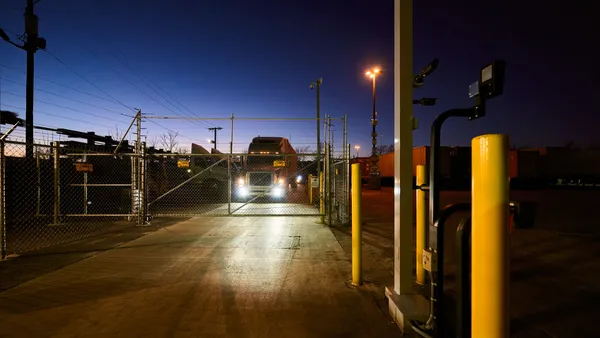Solar innovation is currently going strong, with the latest developments including laser-enhanced contact optimization (LECO) that improves solar cell performance, transparent solar panels that turn glass into a power generator, AI-enabled software that reimagines solar project design, and more. The United States is increasingly becoming a focal point for this type of innovation, leading industry professionals to call for a strengthening of the domestic solar supply chain.
“There’s no question that we need to scale renewable energy even faster than we are now,” says Danielle Merfeld, Chief Technology Officer of Qcells, which develops and manufactures solar panels and related technologies as part of Hanwha Group. “The International Energy Agency set a goal to triple the world’s renewable energy capacity by 2030 to meet net-zero goals, but the world is on track to expand capacity by only 2.5 times.”
What has slowed progress toward this goal? While the answer is complex, one of the primary barriers to innovation has been speed. Scaling at the required pace and level necessary to cut climate emissions at the scale the world needs requires the rapid development of new technologies and expeditious deployment of those innovations. To achieve this goal, innovators need dependable, affordable access to supply and installation.
Accelerating the onshoring of domestic solar production in the United States will not only fast-track innovation but also help the industry overcome many of the obstacles that have stood in its path to date.
Why we need a solar supply chain at home
When the U.S. solar industry is strong, it can act as a sturdy foundation for testing, scaling, deploying, and delivering technology prototypes quickly and effectively. Companies can work with local suppliers to develop and source materials faster, and the reduced need for intermediaries to handle logistics streamlines the entire value chain.
Collaboration also becomes easier as production and logistics assets come closer to the markets they serve. Because operations all fall within similar time zones, teams can work together to solve problems that arise. Near-real-time communication becomes possible, improving responsiveness and minimizing misunderstandings and missed connections.
Closing the feedback loop in this way helps control and improve the supply chain. Artificial intelligence can more easily connect the dots on tasks like problem-solving and product optimization when data about essential metrics like ingot quality and crystallinity purity is being generated in one general location, and suppliers all exist under one geographic roof. Output can then be fed back into the system to create a better result.
A robust domestic supply chain also supports:
- Enhanced intellectual property security to protect revenue and competitive advantage
- Improved investment options for developers
- More career opportunities in solar construction, engineering, and manufacturing
“A robust domestic supply chain is also good for the climate,” says Merfeld. “If we onshore our domestic production, we can cut emissions from solar manufacturing by at least 30%.”
These savings are achieved by reducing waste, improving efficiency, and decreasing the number of miles traveled between production and consumption.
Leading the solar onshoring movement
Many of these advantages discussed here have been drivers behind Qcells’ quest to lead the way in onshoring the solar supply chain.
Until now, critical subcomponents such as silicon wafers have typically not been manufactured in the United States. Qcells hopes to break through the existing monopoly and build a healthier, more secure clean energy economy.
Last year, for example, the company completed a factory expansion at its solar panel plant in Dalton, Georgia, to facilitate the manufacture of a bifacial panel and a new residential solar panel. The company also recently began production at a new U.S. factory in Cartersville, Georgia, which will manufacture polysilicon ingots and cut them into extremely thin silicon wafers. Those wafers are then used to create the photovoltaic cells used in solar panels to convert solar rays into electricity. At the other end of the Cartersville plant, those cells will be used in the production of 16,700 solar panels per day.
In addition, with the support of Hanwha Solutions’ investment, REC Silicon reopened its Moses Lake factory — that had shut down in 2019 — to restart polysilicon production and re-establish a complete domestic supply chain for solar panels. With shipments starting soon, Qcells’ new facility in Cartersville will take 100% of the polysilicon produced in Moses Lake to produce solar panels made entirely in the U.S. by the end of 2024.
Hanwha Advanced Materials Georgia, another Hanwha Group affiliate, is building a U.S. factory that will make solar ethylene vinyl acetate (EVA) and backsheet. By the end of the year, the company estimates that it will have 3.3 GW of sustainable, American-made solar panels built from poly to panel.
“Of course, solar innovation will continue, with or without a strong domestic industry,” says Merfeld. “However, the presence of one can greatly accelerate the adoption and deployment of new technologies. It can also foster a virtuous cycle of collaboration and innovation between all aspects of the energy chain.”










